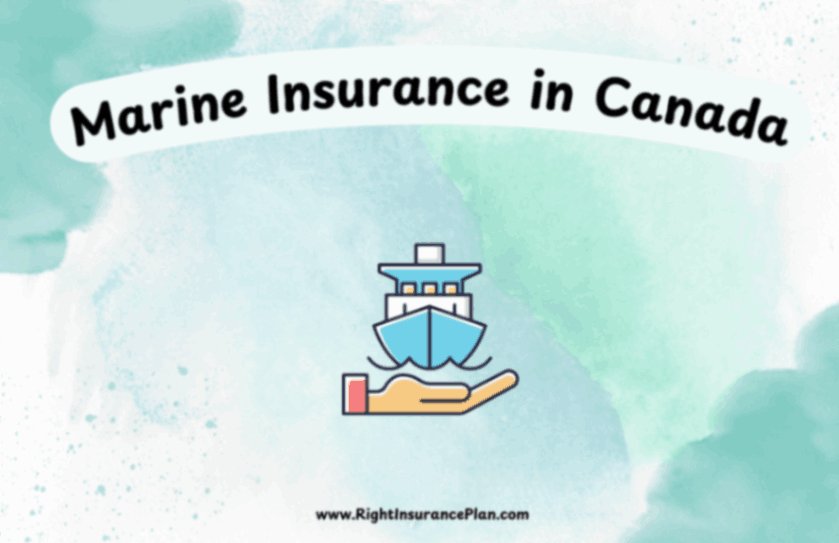
Comprehensive Two-Wheeler Insurance in Canada
As the popularity of motorcycles, scooters, and other two-wheeled vehicles continues to grow in Canada, so does the importance of understanding comprehensive insurance coverage. Whether you're a seasoned rider or a newcomer to the two-wheeler world, having the right insurance is crucial for protecting yourself, your vehicle, and your finances. In this blog post, we'll dive deep into the world of comprehensive two-wheeler insurance in Canada, exploring what it covers, why it's important, and how to choose the best policy for your needs.
What is Comprehensive Two-Wheeler Insurance?
Comprehensive two-wheeler insurance is a type of coverage that goes beyond the basic mandatory insurance required by law in Canada. While minimum coverage typically includes third-party liability protection, comprehensive insurance offers a broader range of protections for your vehicle and yourself.
Key components of comprehensive two-wheeler insurance often include:
1. Collision coverage
2. Comprehensive coverage (for non-collision related damages)
3. Personal injury protection
4. Uninsured/underinsured motorist coverage
5. Additional optional coverages
Let's break down each of these components to understand what they mean for Canadian riders.
1. Collision Coverage:
Collision coverage protects you financially if your two-wheeler is damaged in a collision with another vehicle or object, regardless of who is at fault. This can be particularly valuable for expensive motorcycles or in situations where the cost of repairs might be significant.
2. Comprehensive Coverage:
Despite its name, "comprehensive coverage" is actually a specific component of a comprehensive insurance policy. It covers damages to your two-wheeler that aren't caused by collisions. This can include:
- Theft
- Vandalism
- Fire
- Natural disasters (e.g., floods, hail storms)
- Falling objects
3. Personal Injury Protection:
This coverage helps pay for medical expenses, lost wages, and other costs associated with injuries sustained in an accident, regardless of who was at fault. The specifics of personal injury protection can vary by province, so it's important to understand the details of coverage in your area.
4. Uninsured/Underinsured Motorist Coverage:
This protects you if you're involved in an accident with a driver who either doesn't have insurance or doesn't have enough coverage to pay for your damages and injuries. Given the potential for serious injuries in motorcycle accidents, this coverage can be crucial.
5. Additional Optional Coverages:
Depending on the insurance provider and your specific needs, you might be able to add other coverages to your policy, such as:
- Roadside assistance
- Rental reimbursement
- Custom parts and equipment coverage
- Trip interruption coverage
The Importance of Comprehensive Coverage for Canadian Riders
While the minimum required insurance provides basic protection, comprehensive coverage offers several key benefits for two-wheeler enthusiasts in Canada:
1. Financial Protection: Motorcycles and other two-wheelers can be expensive. Comprehensive coverage helps protect your investment from a wide range of potential damages.
2. Peace of Mind: Knowing you're covered for various scenarios allows you to enjoy your rides without constant worry about potential financial losses.
3. Legal Compliance: While comprehensive coverage isn't mandatory in all provinces, having it ensures you're meeting or exceeding legal requirements.
4. Adaptability: Comprehensive policies can often be customized to fit your specific needs and riding habits.
Factors Affecting Two-Wheeler Insurance Premiums in Canada
Several factors can influence the cost of your comprehensive two-wheeler insurance in Canada:
1. Type of Vehicle: Generally, sport bikes and high-performance motorcycles cost more to insure than cruisers or standard motorcycles.
2. Engine Size: Larger engines often mean higher premiums, as they're associated with increased power and risk.
3. Rider's Age and Experience: Younger, less experienced riders typically face higher premiums due to increased risk.
4. Riding History: A clean driving record can lead to lower premiums, while accidents or traffic violations can increase costs.
5. Location: Urban areas often have higher premiums due to increased traffic and theft risk.
6. Annual Mileage: The more you ride, the higher your premiums might be.
7. Storage and Security: Secure storage and anti-theft devices can sometimes lead to discounts.
8. Chosen Coverage and Deductibles: Higher coverage limits and lower deductibles generally mean higher premiums.
Provincial Variations in Two-Wheeler Insurance
It's important to note that insurance regulations and requirements can vary by province in Canada. Here's a brief overview of some provincial differences:
1. British Columbia, Saskatchewan, and Manitoba: These provinces have government-run insurance programs, which can affect coverage options and pricing.
2. Quebec: The province has a unique system where bodily injury coverage is provided by the government, while property damage is covered by private insurers.
3. Ontario: The province has some of the highest insurance rates in the country, but also offers a winter storage option that can reduce premiums during off-season months.
4. Alberta: The province allows for some flexibility in coverage options, potentially leading to more customizable policies.
Always check with local authorities or insurance providers for the most up-to-date information on requirements and options in your specific province.
Tips for Choosing the Right Comprehensive Two-Wheeler Insurance
1. Assess Your Needs: Consider your riding habits, the value of your bike, and your risk tolerance when deciding on coverage limits and options.
2. Compare Quotes: Don't settle for the first quote you receive. Shop around and compare offerings from multiple insurance providers.
3. Look for Discounts: Many insurers offer discounts for things like multiple policies, safety courses, or membership in certain organizations.
4. Understand the Policy: Make sure you fully understand what is and isn't covered in your policy.
5. Consider Bundling: If you have other insurance needs (e.g., home, auto), bundling policies with one insurer might lead to savings.
6. Review Annually: Your insurance needs may change over time.
Emerging Trends in Canadian Two-Wheeler Insurance
As we move through 2024, several trends are shaping the landscape of two-wheeler insurance in Canada:
1. Usage-Based Insurance: Some insurers are offering policies that base premiums on actual riding habits, tracked through telematics devices.
2. Enhanced Digital Services: Many insurance companies are improving their digital platforms, making it easier to manage policies, file claims, and access support online.
3. Increased Focus on Safety: Insurers are placing more emphasis on rider safety, often offering discounts for completion of approved safety courses.
4. Electric Two-Wheeler Considerations: As electric motorcycles and scooters become more popular, insurers are adapting their policies to address the unique aspects of these vehicles.
5. Climate Change Impacts: With increasing concerns about extreme weather events, some insurers are adjusting their comprehensive coverage to better address climate-related risks.
Conclusion:
Comprehensive two-wheeler insurance in Canada offers riders a robust layer of protection that goes well beyond the basic mandatory coverage. While it may come at a higher cost than minimum insurance, the peace of mind and financial protection it provides can be invaluable for enthusiasts who want to fully enjoy their riding experience without constant worry.
You can also check the information regarding Comprehensive Car Insurance In Canada
FAQs:
1. Is comprehensive two-wheeler insurance mandatory in Canada?
Comprehensive insurance is not mandatory in most provinces. However, basic third-party liability insurance is required everywhere in Canada. Some provinces may have additional minimum coverage requirements.
2. What's the difference between comprehensive and collision coverage?
Comprehensive insurance covers non-collision losses like as burglary, damage to property, and natural catastrophes. Collision coverage protects against damages from collisions with other vehicles or objects.
3. How much does comprehensive two-wheeler insurance typically cost in Canada?
Costs vary widely based on factors like location, type of vehicle, rider experience, and coverage limits. On average, it can range from $500 to $3000+ annually.
4. Can you insure your motorcycle year-round even if you only ride in summer?
Yes, you can. Some insurers offer reduced rates for winter storage. Alternatively, you might consider cancelling collision coverage during winter months, but maintain comprehensive for theft and damage protection.
5. Does your automobile insurance policy cover your motorcycle?
Generally, no. Motorcycles typically require separate insurance policies from cars.
6. Are there any discounts available for comprehensive two-wheeler insurance?
Many insurers offer discounts for things like multiple policies, completion of safety courses, anti-theft devices, and clean driving records.
7. How does your age affect your insurance premium?
Younger drivers (usually under 25) may incur higher rates because to a supposed higher risk. Premiums generally decrease as riders age and gain experience.
8. What should you do if your motorcycle is stolen?
Report the theft to the police immediately and contact your insurance company as soon as possible to start the claims process.
9. Does comprehensive insurance cover your gear and accessories?
Basic policies may not cover gear and accessories. You might need to add specific coverage for these items.
10. How does modifying your motorcycle affect your insurance?
Modifications can increase your premiums, and some modifications might not be covered without specific add-ons to your policy. Always inform your insurer about modifications.
11. What's the process for filing a claim?
Generally, you'll need to contact your insurer, provide details of the incident, and potentially file a police report. Your insurance will walk you through their particular method.
12. Is there a difference in insurance costs between different types of motorcycles?
Yes. Sport bikes and high-performance motorcycles often cost more to insure than cruisers or standard motorcycles.



